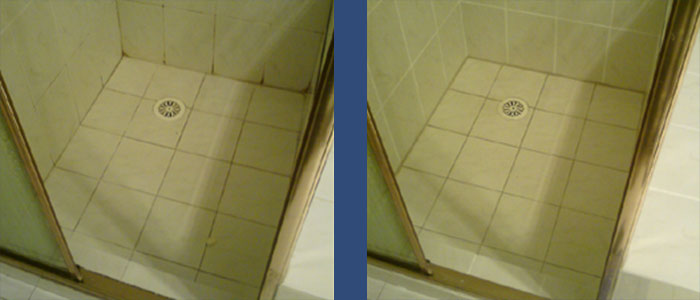Just how do you actually feel in relation to Preventing Water Damage in the Bathroom?

The washroom is incredibly prone for wet accumulation as well as possible water damage due to the frequent use of water in it. This article provides simple examination strategies to help spotting water damage threats.
The regular use water in the restroom makes it incredibly prone for moist buildup and also possible water damage. By examining it regularly, you can decrease water relevant damages.
The following collection of evaluations is very easy to execute and also should be done once in every 3 months in order to keep your bathroom in good shape and to prevent prospective water problems triggered by the tub, the shower, pipeline joints as well as plumbing, sinks, cupboards, as well as the bathroom
Do not disregard doing these inspections and also be extensive while performing them. Bear in mind that these straightforward examinations can conserve you a great deal of cash by giving very early signs for water damage
Bathtub and also Shower
The shower and tub require unique focus as well as upkeep. Examine the floor tiles as well as change if broken. Make certain that there is no missing out on grout in between the ceramic tiles. Examine and change broken caulking at joints where the walls meet the floor or the bathtub. Clogged drains pipes and also pipelines issues will prevent the tub from drying and may suggest serious troubles below the bathtub. Speak with a professional immediately to stop structural damages. Focus on stainings or soft areas around the tub walls as they might show an internal leakage.
Plumbing
Signs for water damages are difficult to discover because most pipelines are set up inside the walls.
Pay unique attention to flooring and wall surfaces wetness and stains as they might suggest an invisible plumbing issue. Inspect wetness levels in adjacent spaces too.
Sinks and Cabinets
Sinks and cupboards are subjected to wetness as well as moisture day-to-day and also are frequently forgotten. Examine consistently under the sink as well as on the kitchen counter above it. Repair any type of drip in the trap as it might recommend drain issues. Browse the sink, slow draining pipes might indicate an obstructed drain. Change sink seals if they are cracked or loose.
The Bathroom
The bathroom is a prone water junction. Examine the water lines and look for leaks around the commode seat, in the hose, and under the water storage tank. If you detect any signs of wetness on the flooring around the toilet, look for leakages in the toilet rim as well as container seals.
Understand that hanging toilet dish deodorants raises the opportunities for clogs.
10 TIPS TO PREVENT WATER DAMAGE IN THE BATHROOM
The average household uses approximately 80-100 gallons of water per person per day. For a family of 4, that's almost 2,500 gallons of water a week! The largest portion of this consumption comes from bathroom use. Flushing the toilet uses the most water, followed by taking a shower or bath. With that much water running through the home, water damage in the bathroom is bound to happen. Knowing how to spot signs of a water leak is essential to preventing long-term damage. This guide provides you with tips to reduce the impact of water damage on your bathroom.
CAUSES OF BATHROOM WATER DAMAGE
Pipe breaks are the most common cause of water damage we see in our daily jobs. The age of a pipe plays a large role in a pipe break as well as corrosion. Over time, the metal begins to break down, allowing water to escape. Frozen pipe breaks are also a concern in the winter months. Toilet overflows caused by paper products or children flushing inappropriate items. Degraded caulking around the toilet or bathtub can allow water seepage, sometimes behind the fixture, into the subfloor or walls. Condensation forms when the water in a pipe is cooler than the air temperature. Beads of water form on the exterior of the pipes, sometimes so much so that the water begins to drip and pool below. Sink or shower backups created by poor drainage. HOW TO PREVENT WATER DAMAGE IN YOUR BATHROOM
Inspect your toilet supply line for worn or frayed hoses and replace them as needed. Winterize your plumbing to prevent a frozen pipe break. Use vent fans to prevent condensation that can lead to mold growth. Routinely check and replace degraded caulking around your toilet or bathtub. Increase the temperature in your toilet tank and insulate your pipes during the warm summer months to keep condensation from forming. Use child safety locks on the toilets. Flush only toilet paper. "Flushable" wet wipes are actually not good for your plumbing system. Additionally, feminine hygiene products should not be flushed. Prevent water from escaping the tub or shower. Make sure shower curtains are in good condition. Inspect shower doors and replace the seal strip if necessary. Wipe up any water that accumulates on the floor and use bath mats. Water left to sit can cause damage to the tiles and flooring. Refrain from using bath products containing heavy oils to avoid a clogged drain.

Do you enjoy reading about Preventing Water Damage in the Bathroom? Create a short review below. We'd be delighted to see your ideas about this post. We are looking forward that you come back again soon. Feel free to set aside a second to share this blog if you appreciated it. Thank you so much for going through it.
Make An Appointment